MN6003 Strategy: Leadership and Strategic Change at Unilever
VerifiedAdded on 2023/06/18
|12
|718
|385
Case Study
AI Summary
This case study examines Unilever's strategic changes, particularly focusing on the period before and after 2009, highlighting the shift towards sustainability and a broader product portfolio. It employs models like the Change Kaleidoscope and Lewin's Forcefield Analysis to evaluate Unilever's strategic adaptations and the evolving expectations of employees. The analysis extends to Paul Polman's leadership, assessing his impact through Lynch’s Five Elements and the Transcendent Leadership Model. The study concludes that Unilever's success in adapting to market demands and embracing sustainability is crucial for its long-term survival, emphasizing the importance of innovation and expanding product offerings. Desklib provides students access to similar solved assignments and study tools.
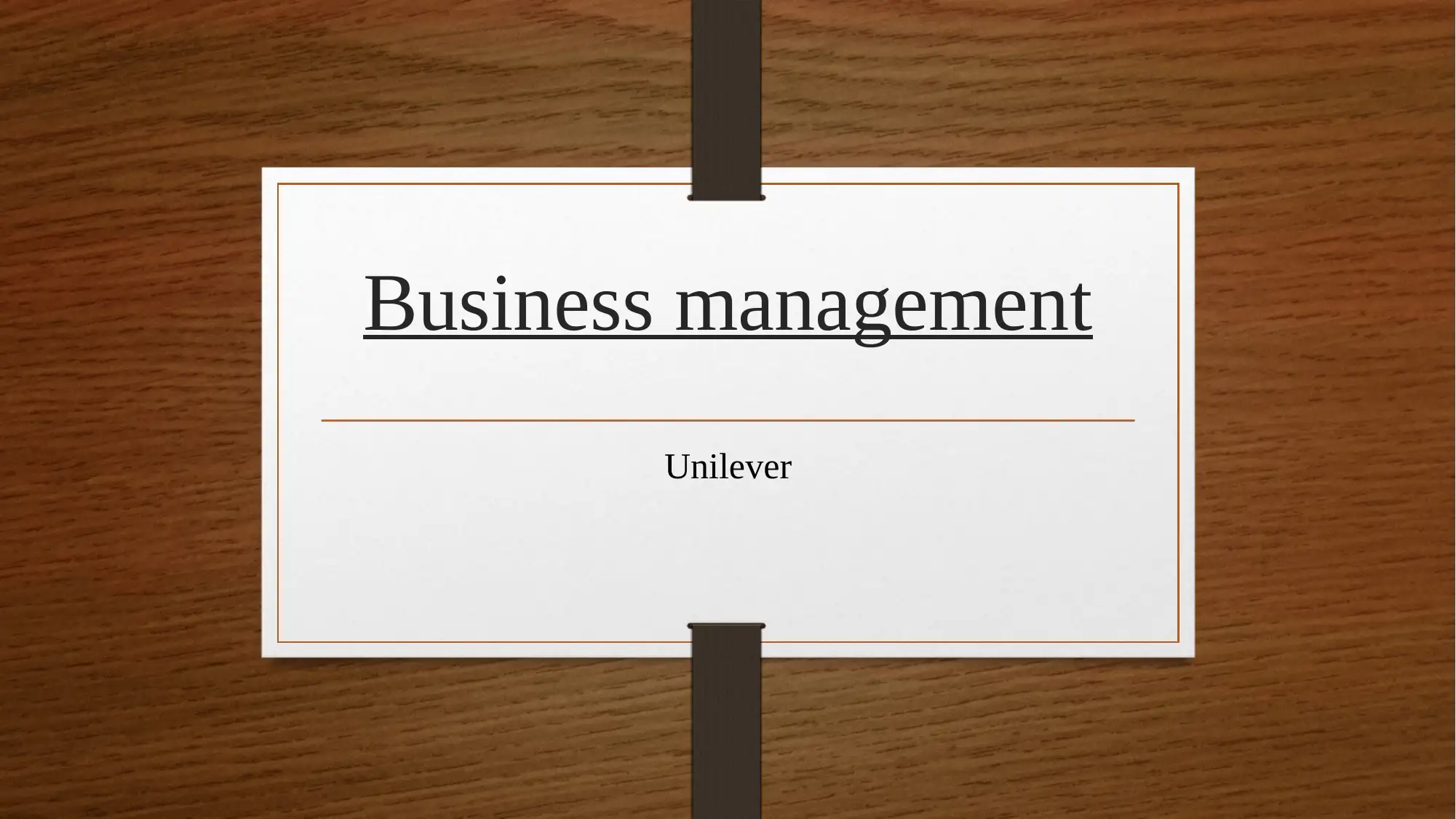
Business management
Unilever
Unilever
Paraphrase This Document
Need a fresh take? Get an instant paraphrase of this document with our AI Paraphraser
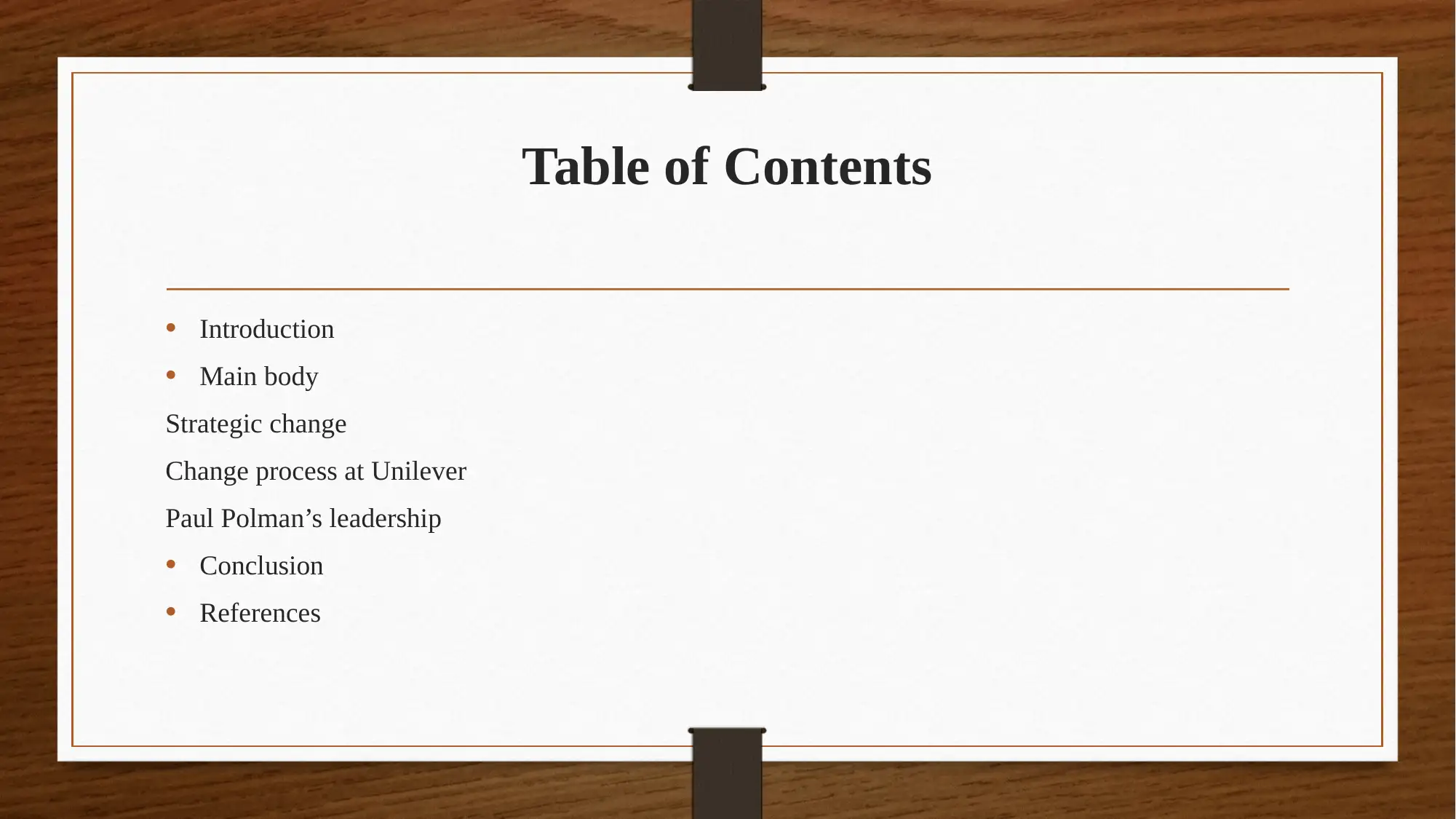
Table of Contents
• Introduction
• Main body
Strategic change
Change process at Unilever
Paul Polman’s leadership
• Conclusion
• References
• Introduction
• Main body
Strategic change
Change process at Unilever
Paul Polman’s leadership
• Conclusion
• References
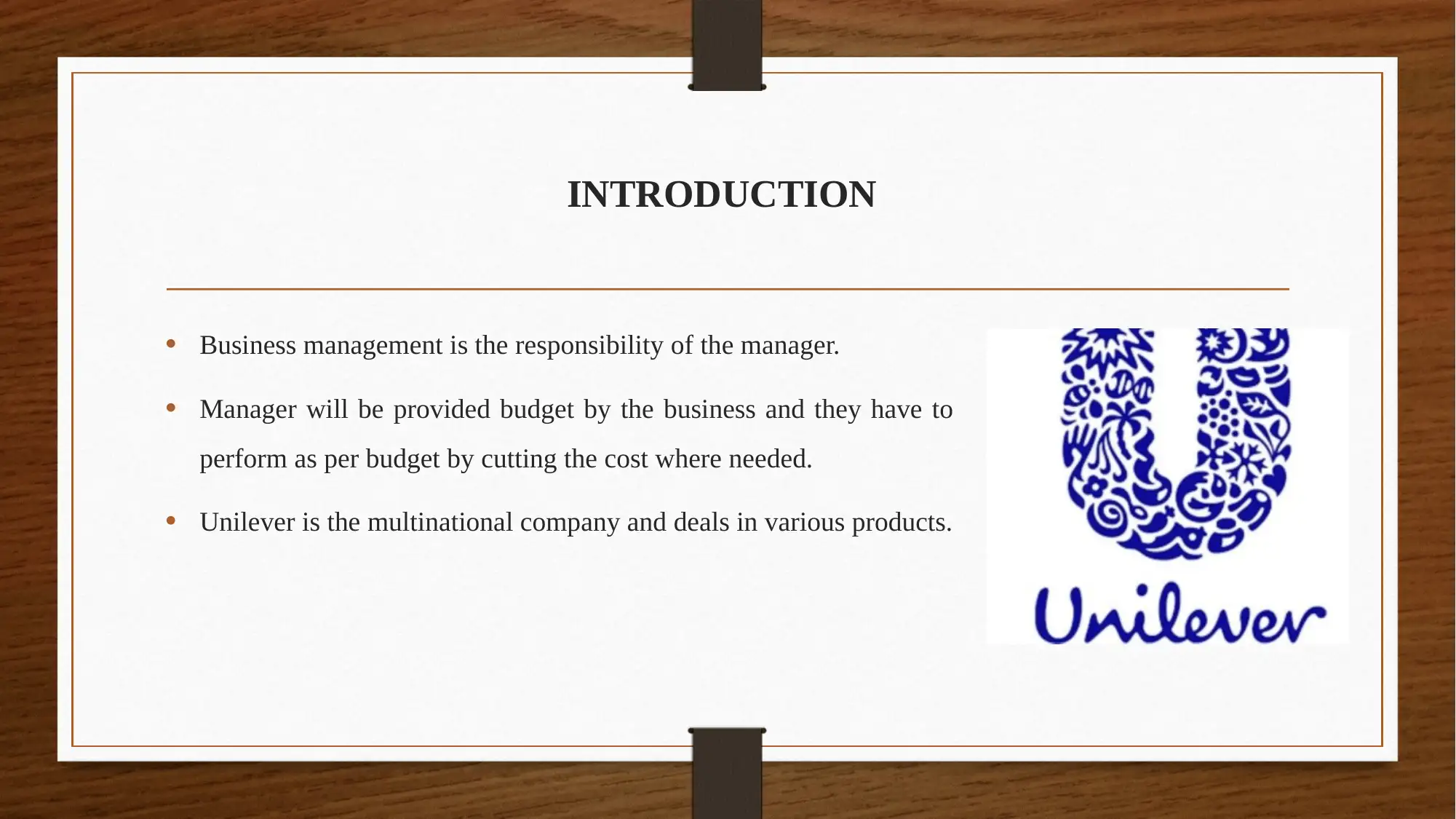
INTRODUCTION
• Business management is the responsibility of the manager.
• Manager will be provided budget by the business and they have to
perform as per budget by cutting the cost where needed.
• Unilever is the multinational company and deals in various products.
• Business management is the responsibility of the manager.
• Manager will be provided budget by the business and they have to
perform as per budget by cutting the cost where needed.
• Unilever is the multinational company and deals in various products.
⊘ This is a preview!⊘
Do you want full access?
Subscribe today to unlock all pages.

Trusted by 1+ million students worldwide
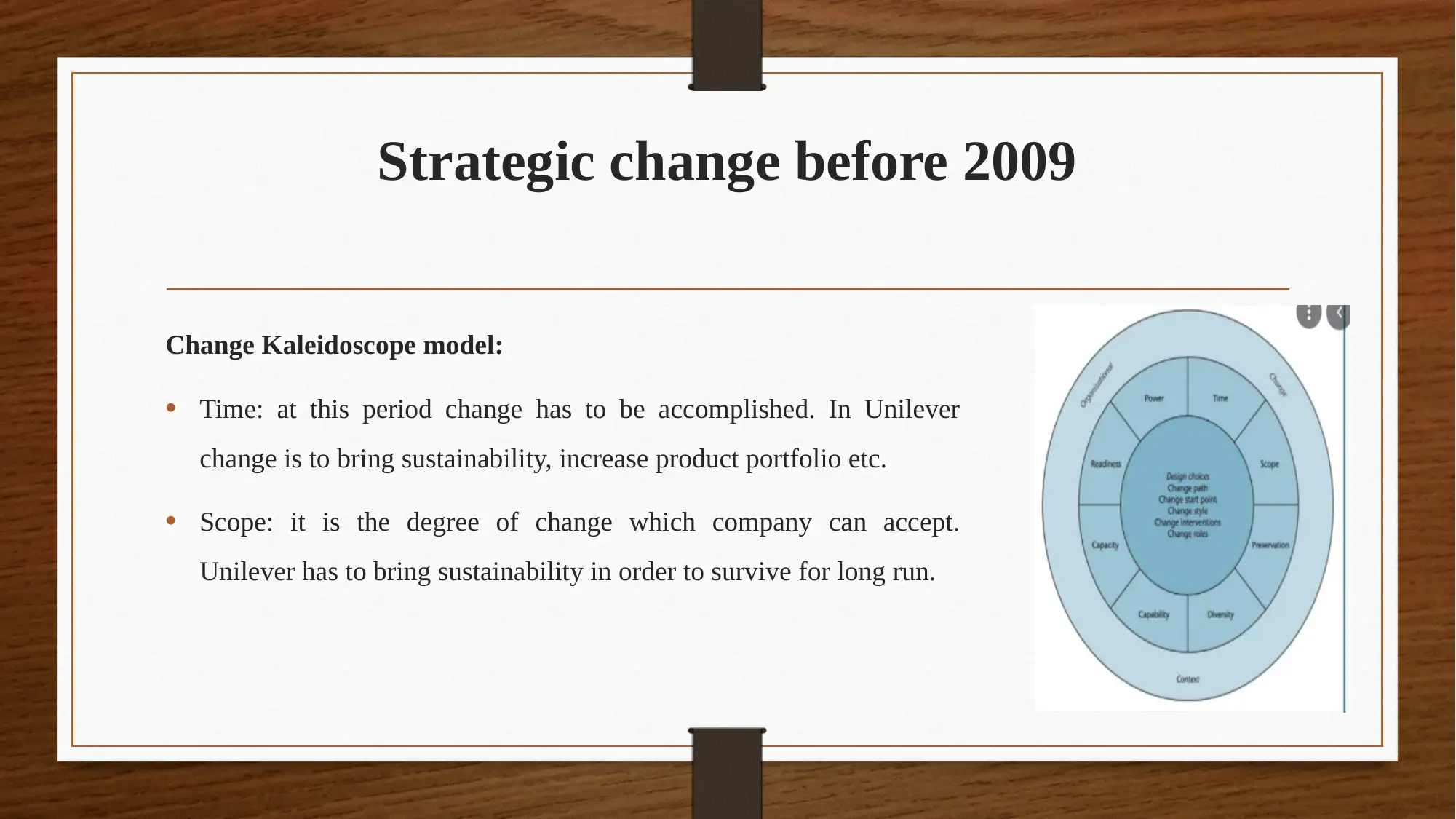
Strategic change before 2009
Change Kaleidoscope model:
• Time: at this period change has to be accomplished. In Unilever
change is to bring sustainability, increase product portfolio etc.
• Scope: it is the degree of change which company can accept.
Unilever has to bring sustainability in order to survive for long run.
Change Kaleidoscope model:
• Time: at this period change has to be accomplished. In Unilever
change is to bring sustainability, increase product portfolio etc.
• Scope: it is the degree of change which company can accept.
Unilever has to bring sustainability in order to survive for long run.
Paraphrase This Document
Need a fresh take? Get an instant paraphrase of this document with our AI Paraphraser
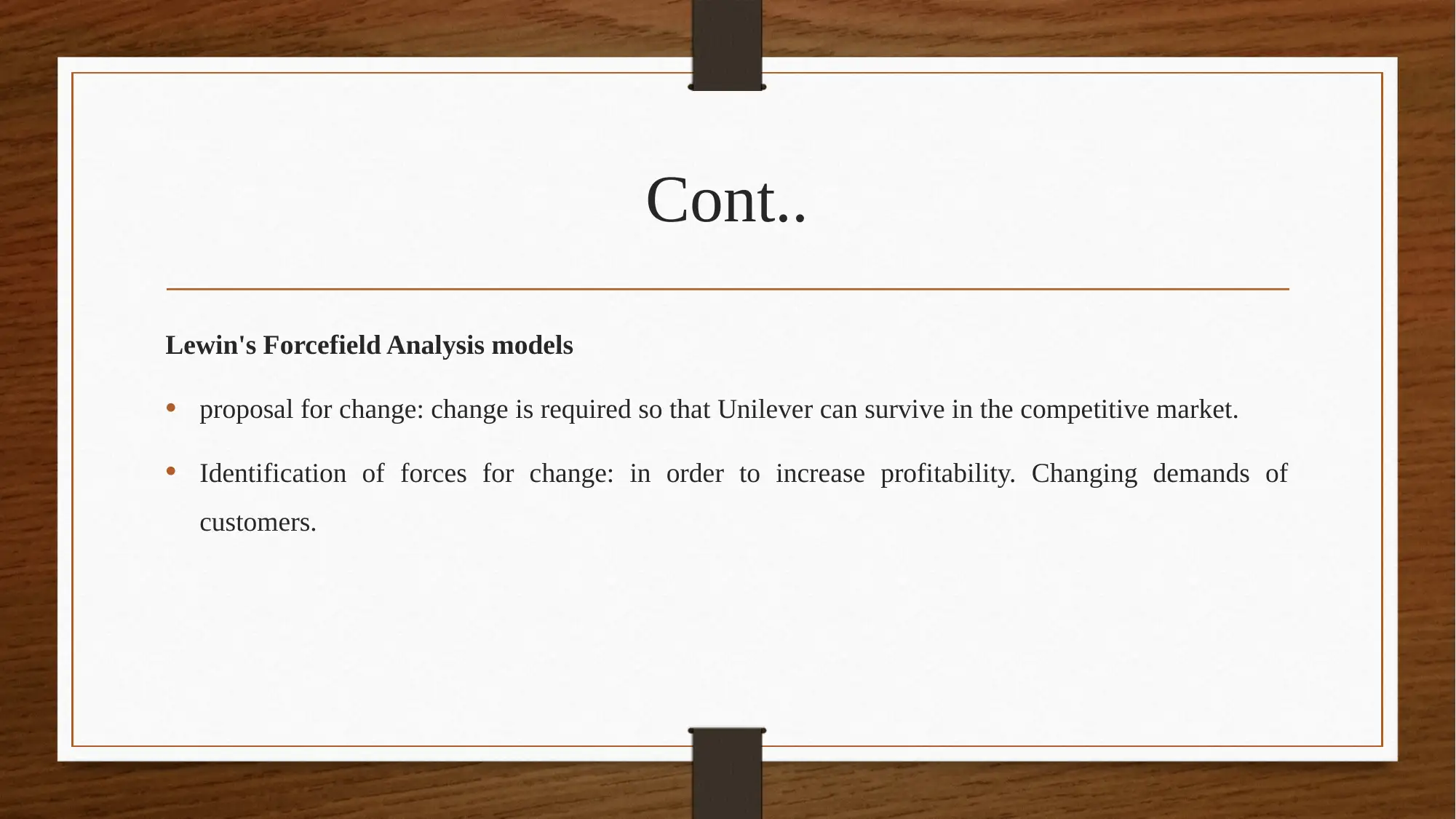
Cont..
Lewin's Forcefield Analysis models
• proposal for change: change is required so that Unilever can survive in the competitive market.
• Identification of forces for change: in order to increase profitability. Changing demands of
customers.
Lewin's Forcefield Analysis models
• proposal for change: change is required so that Unilever can survive in the competitive market.
• Identification of forces for change: in order to increase profitability. Changing demands of
customers.
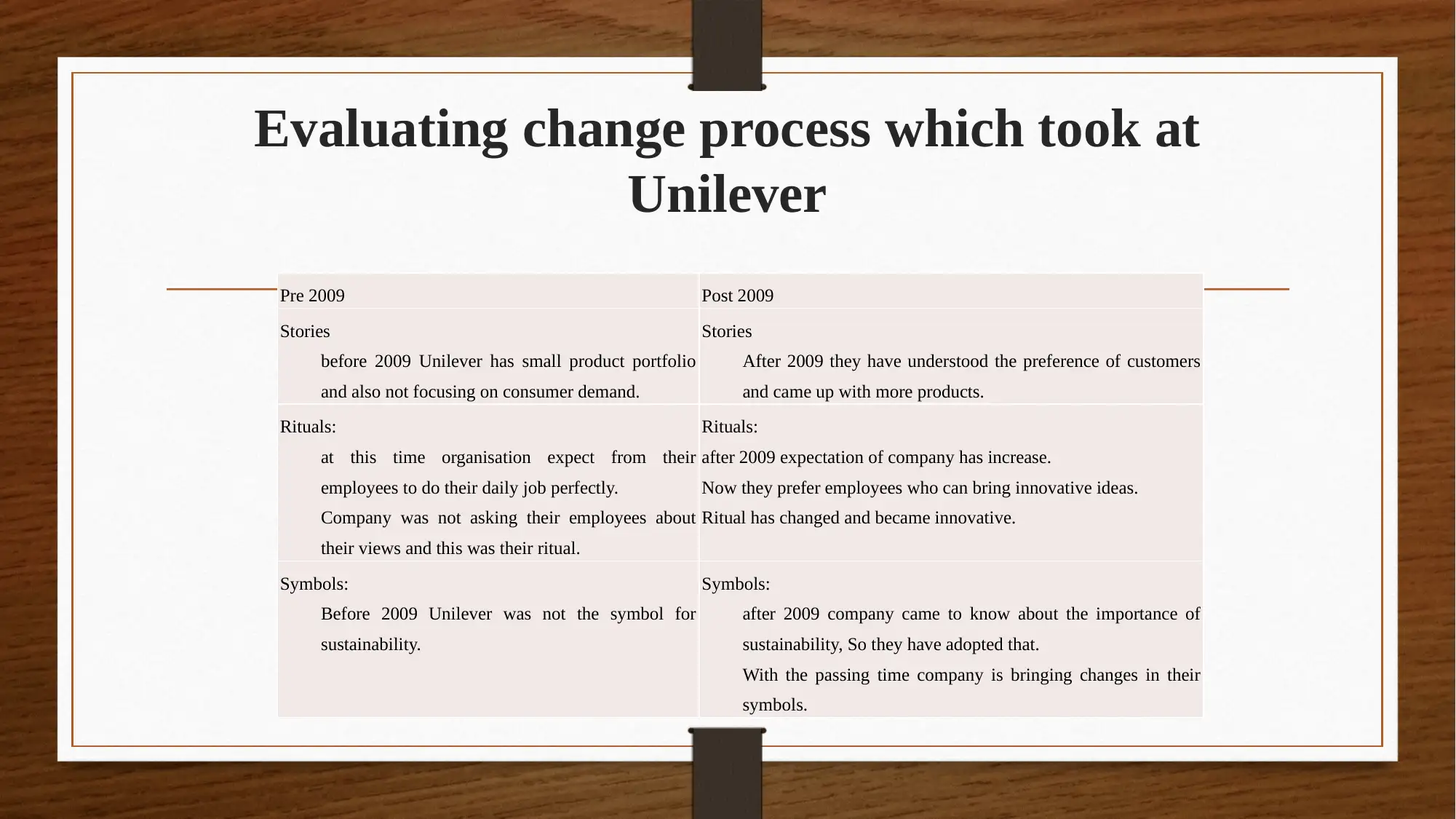
Evaluating change process which took at
Unilever
Pre 2009 Post 2009
Stories
before 2009 Unilever has small product portfolio
and also not focusing on consumer demand.
Stories
After 2009 they have understood the preference of customers
and came up with more products.
Rituals:
at this time organisation expect from their
employees to do their daily job perfectly.
Company was not asking their employees about
their views and this was their ritual.
Rituals:
after 2009 expectation of company has increase.
Now they prefer employees who can bring innovative ideas.
Ritual has changed and became innovative.
Symbols:
Before 2009 Unilever was not the symbol for
sustainability.
Symbols:
after 2009 company came to know about the importance of
sustainability, So they have adopted that.
With the passing time company is bringing changes in their
symbols.
Unilever
Pre 2009 Post 2009
Stories
before 2009 Unilever has small product portfolio
and also not focusing on consumer demand.
Stories
After 2009 they have understood the preference of customers
and came up with more products.
Rituals:
at this time organisation expect from their
employees to do their daily job perfectly.
Company was not asking their employees about
their views and this was their ritual.
Rituals:
after 2009 expectation of company has increase.
Now they prefer employees who can bring innovative ideas.
Ritual has changed and became innovative.
Symbols:
Before 2009 Unilever was not the symbol for
sustainability.
Symbols:
after 2009 company came to know about the importance of
sustainability, So they have adopted that.
With the passing time company is bringing changes in their
symbols.
⊘ This is a preview!⊘
Do you want full access?
Subscribe today to unlock all pages.

Trusted by 1+ million students worldwide
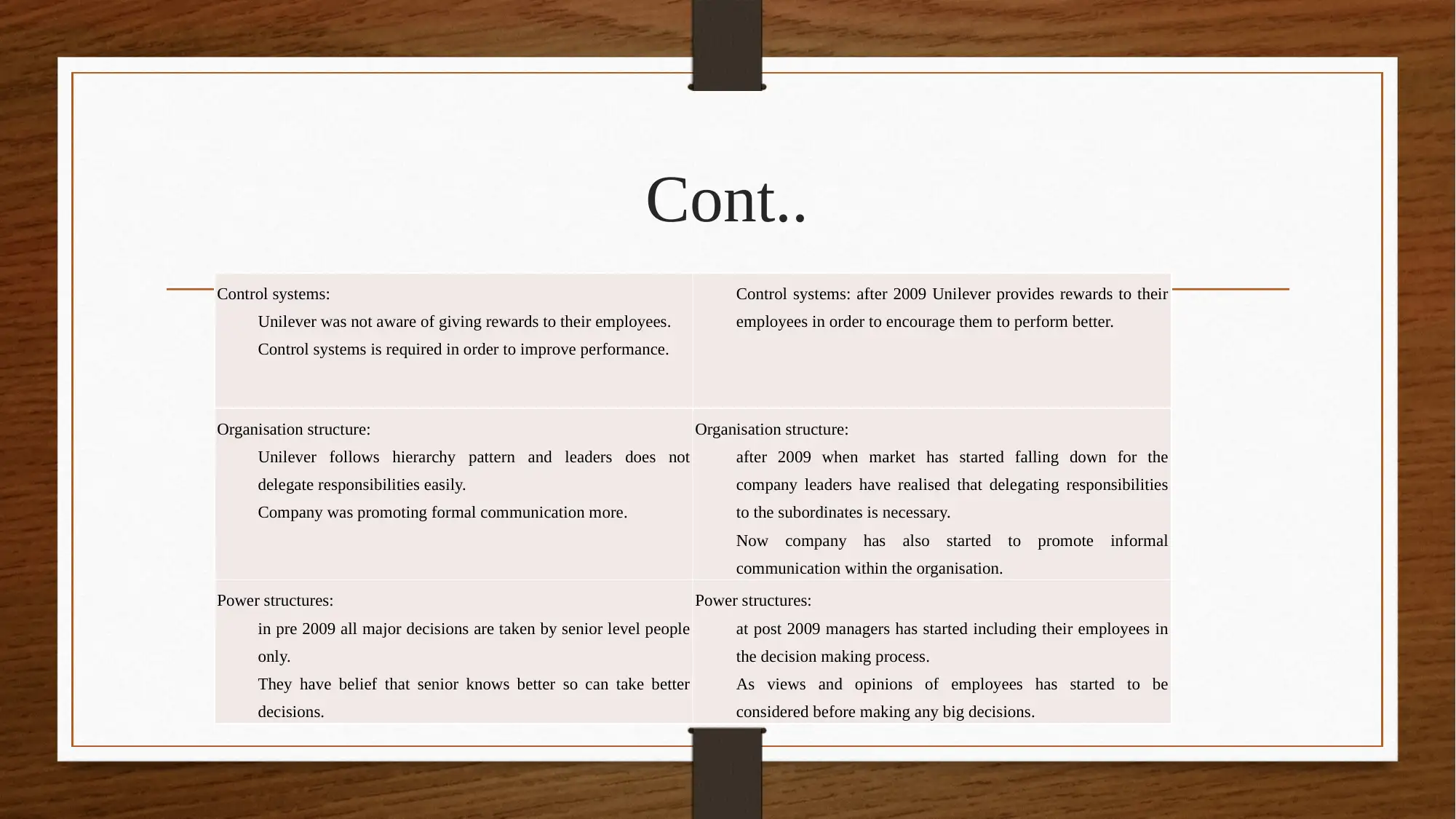
Cont..
Control systems:
Unilever was not aware of giving rewards to their employees.
Control systems is required in order to improve performance.
Control systems: after 2009 Unilever provides rewards to their
employees in order to encourage them to perform better.
Organisation structure:
Unilever follows hierarchy pattern and leaders does not
delegate responsibilities easily.
Company was promoting formal communication more.
Organisation structure:
after 2009 when market has started falling down for the
company leaders have realised that delegating responsibilities
to the subordinates is necessary.
Now company has also started to promote informal
communication within the organisation.
Power structures:
in pre 2009 all major decisions are taken by senior level people
only.
They have belief that senior knows better so can take better
decisions.
Power structures:
at post 2009 managers has started including their employees in
the decision making process.
As views and opinions of employees has started to be
considered before making any big decisions.
Control systems:
Unilever was not aware of giving rewards to their employees.
Control systems is required in order to improve performance.
Control systems: after 2009 Unilever provides rewards to their
employees in order to encourage them to perform better.
Organisation structure:
Unilever follows hierarchy pattern and leaders does not
delegate responsibilities easily.
Company was promoting formal communication more.
Organisation structure:
after 2009 when market has started falling down for the
company leaders have realised that delegating responsibilities
to the subordinates is necessary.
Now company has also started to promote informal
communication within the organisation.
Power structures:
in pre 2009 all major decisions are taken by senior level people
only.
They have belief that senior knows better so can take better
decisions.
Power structures:
at post 2009 managers has started including their employees in
the decision making process.
As views and opinions of employees has started to be
considered before making any big decisions.
Paraphrase This Document
Need a fresh take? Get an instant paraphrase of this document with our AI Paraphraser
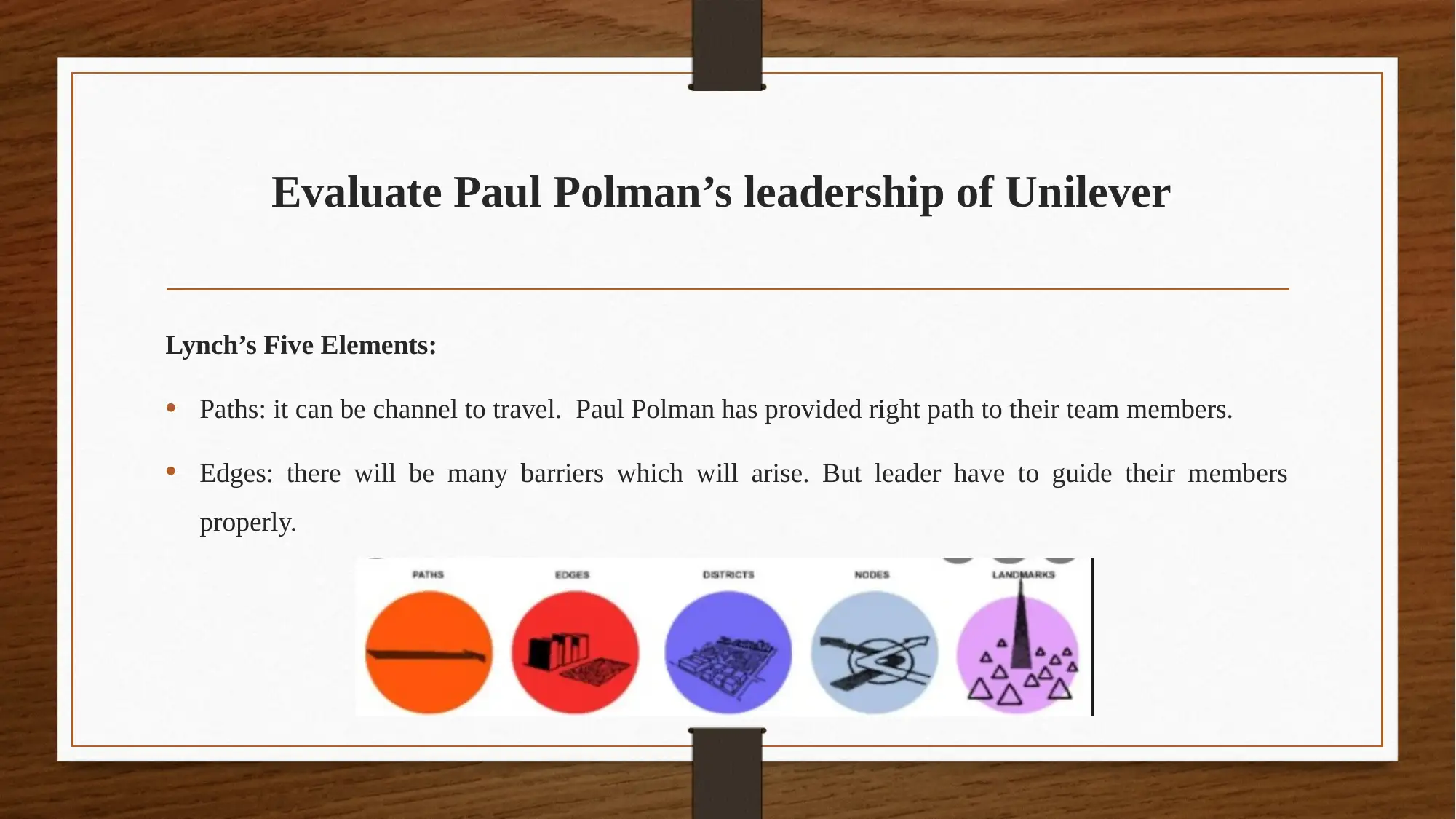
Evaluate Paul Polman’s leadership of Unilever
Lynch’s Five Elements:
• Paths: it can be channel to travel. Paul Polman has provided right path to their team members.
• Edges: there will be many barriers which will arise. But leader have to guide their members
properly.
Lynch’s Five Elements:
• Paths: it can be channel to travel. Paul Polman has provided right path to their team members.
• Edges: there will be many barriers which will arise. But leader have to guide their members
properly.
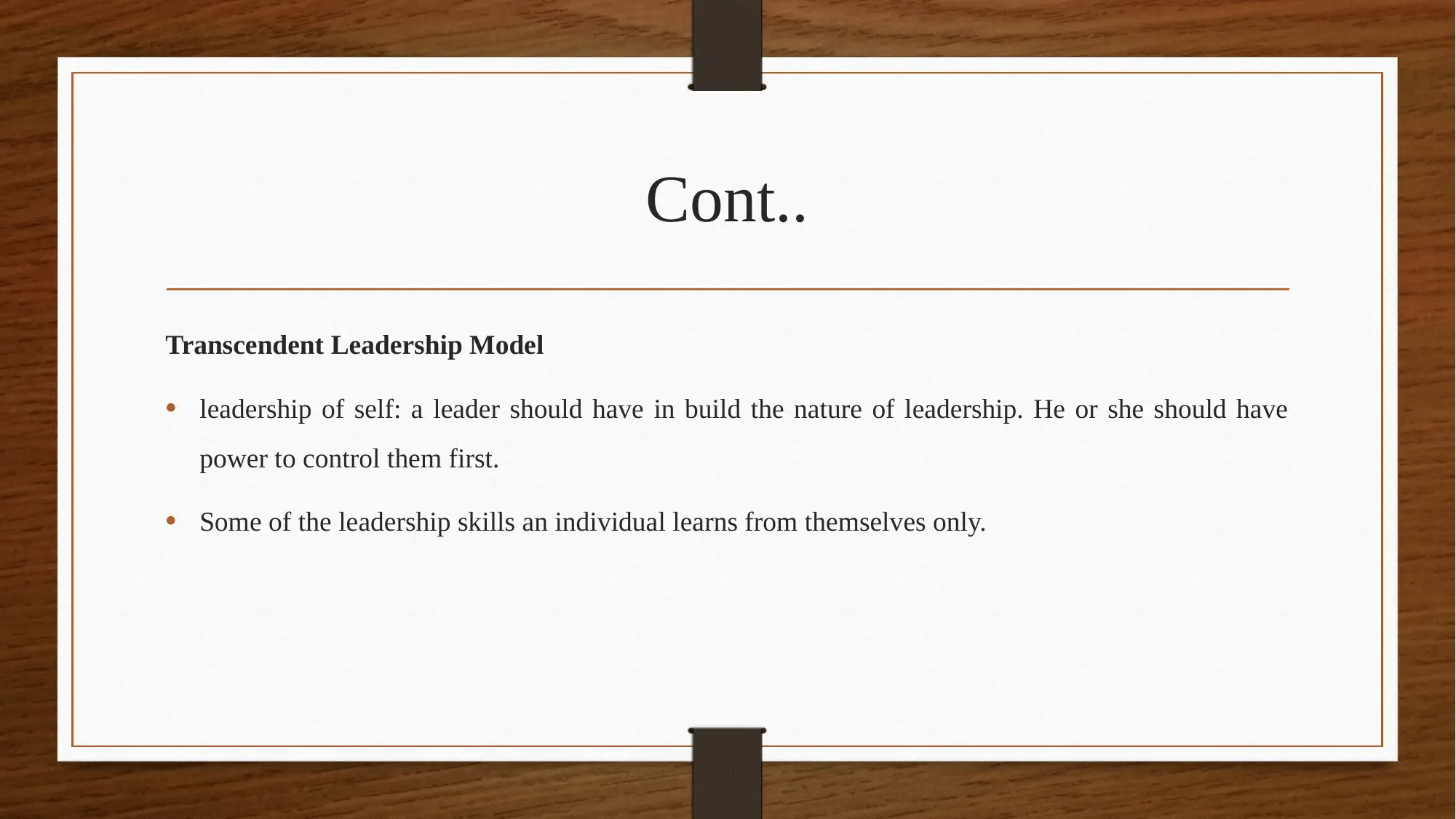
Cont..
Transcendent Leadership Model
• leadership of self: a leader should have in build the nature of leadership. He or she should have
power to control them first.
• Some of the leadership skills an individual learns from themselves only.
Transcendent Leadership Model
• leadership of self: a leader should have in build the nature of leadership. He or she should have
power to control them first.
• Some of the leadership skills an individual learns from themselves only.
⊘ This is a preview!⊘
Do you want full access?
Subscribe today to unlock all pages.

Trusted by 1+ million students worldwide
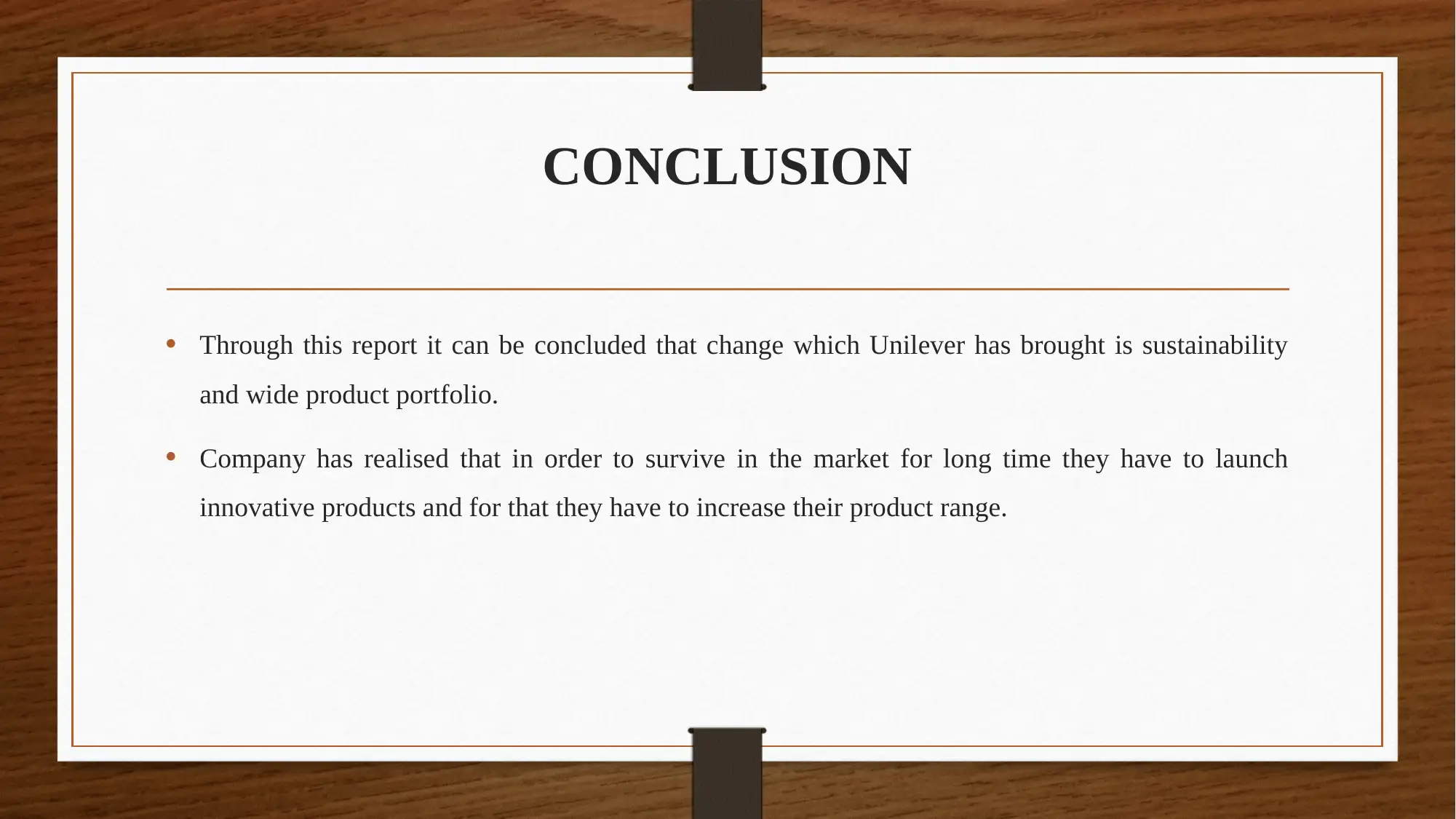
CONCLUSION
• Through this report it can be concluded that change which Unilever has brought is sustainability
and wide product portfolio.
• Company has realised that in order to survive in the market for long time they have to launch
innovative products and for that they have to increase their product range.
• Through this report it can be concluded that change which Unilever has brought is sustainability
and wide product portfolio.
• Company has realised that in order to survive in the market for long time they have to launch
innovative products and for that they have to increase their product range.
Paraphrase This Document
Need a fresh take? Get an instant paraphrase of this document with our AI Paraphraser
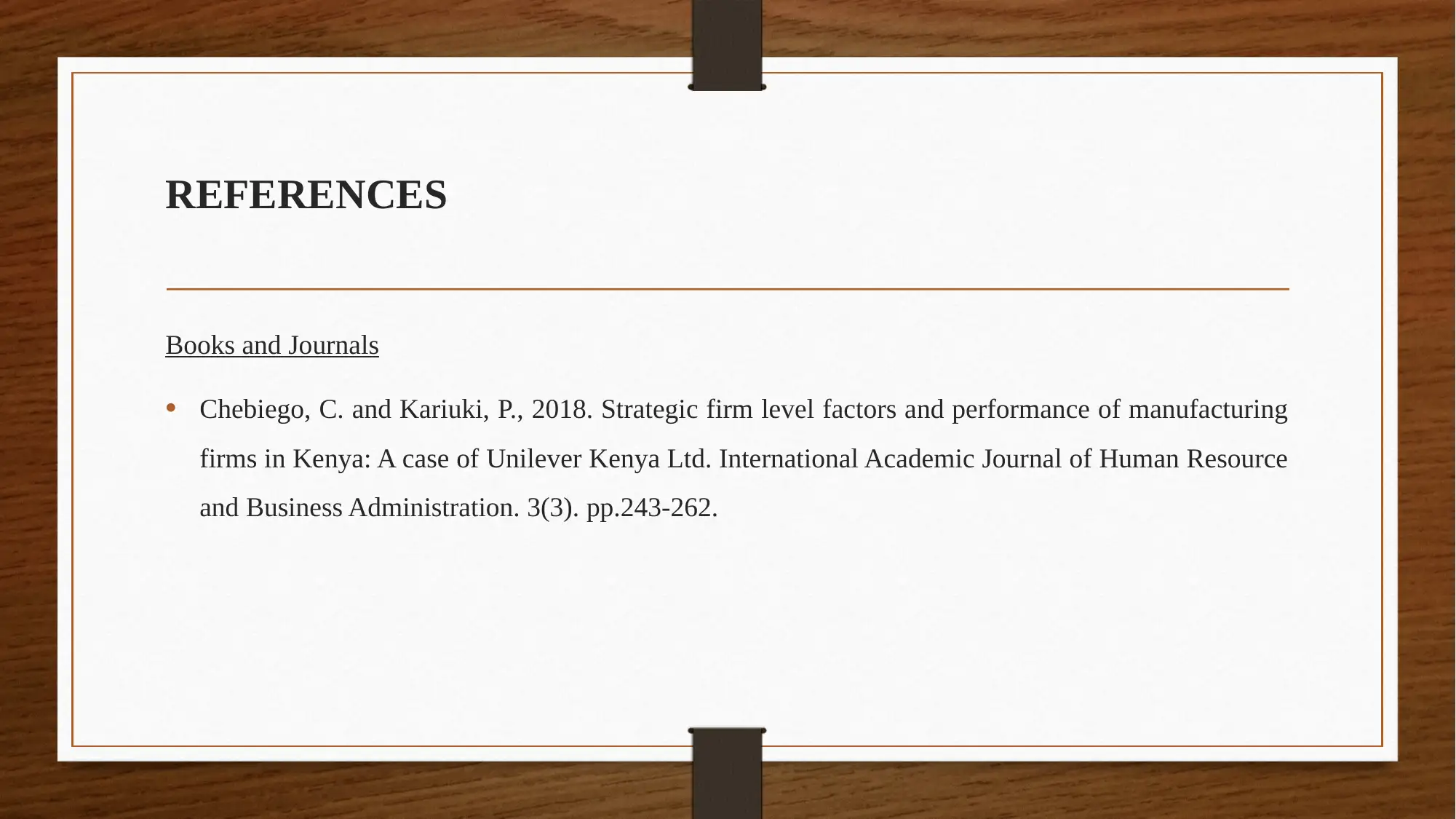
REFERENCES
Books and Journals
• Chebiego, C. and Kariuki, P., 2018. Strategic firm level factors and performance of manufacturing
firms in Kenya: A case of Unilever Kenya Ltd. International Academic Journal of Human Resource
and Business Administration. 3(3). pp.243-262.
Books and Journals
• Chebiego, C. and Kariuki, P., 2018. Strategic firm level factors and performance of manufacturing
firms in Kenya: A case of Unilever Kenya Ltd. International Academic Journal of Human Resource
and Business Administration. 3(3). pp.243-262.
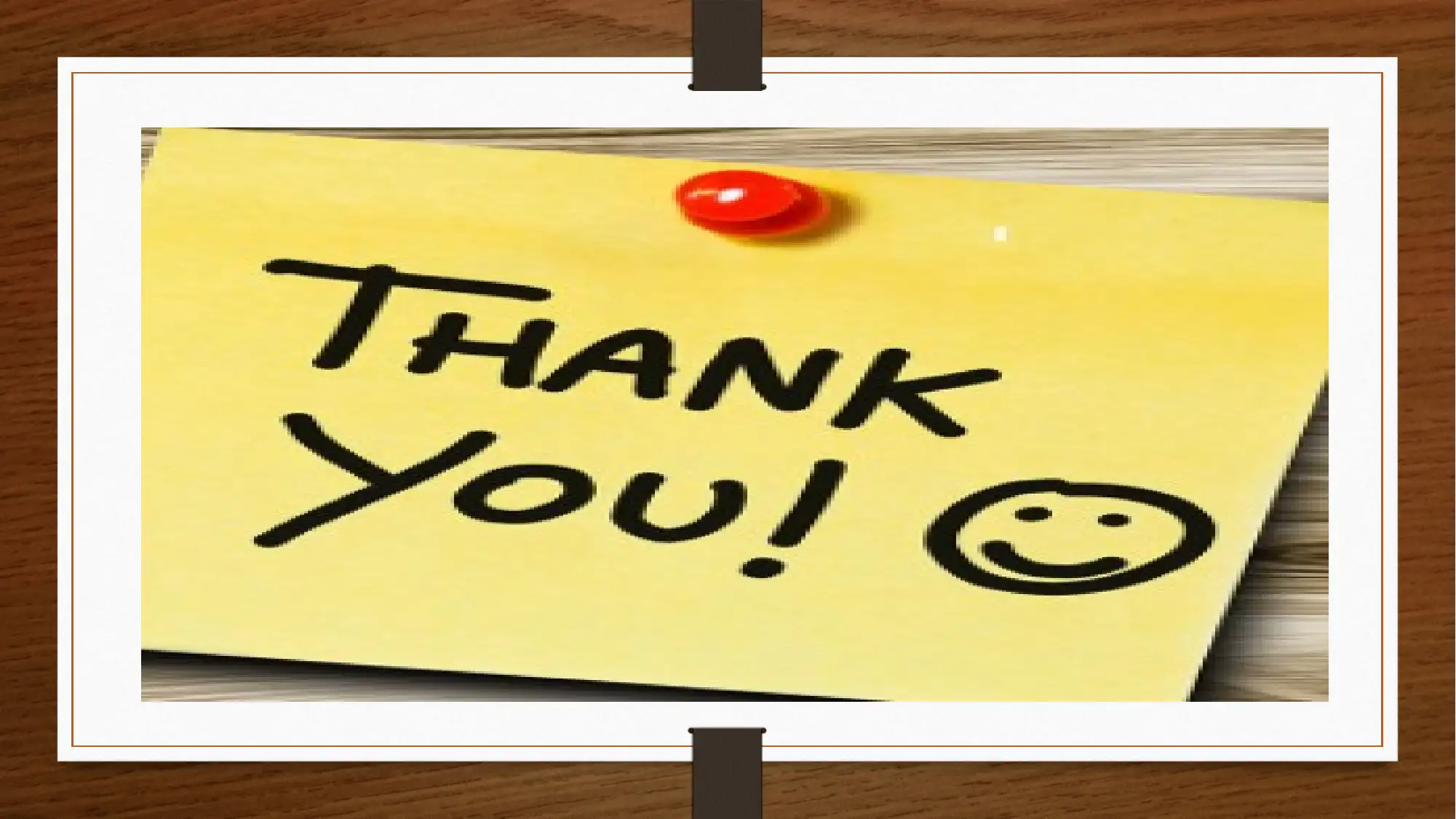
⊘ This is a preview!⊘
Do you want full access?
Subscribe today to unlock all pages.

Trusted by 1+ million students worldwide
1 out of 12
Your All-in-One AI-Powered Toolkit for Academic Success.
+13062052269
info@desklib.com
Available 24*7 on WhatsApp / Email
![[object Object]](/_next/static/media/star-bottom.7253800d.svg)
Unlock your academic potential
Copyright © 2020–2025 A2Z Services. All Rights Reserved. Developed and managed by ZUCOL.

